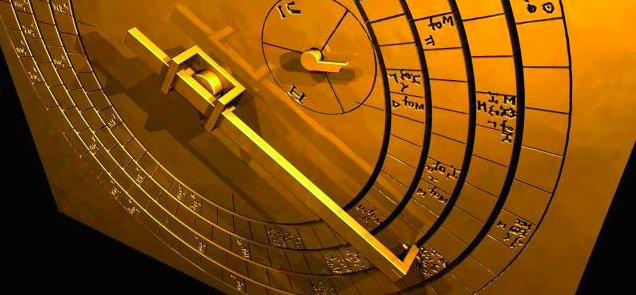In the year 1900, a group of sponge divers were exploring the ocean floor off the coast of Antikythera, a Greek island in the Aegean Sea. There they came across an ancient ship wreck that held one of the greatest and most astonishing discoveries of the modern world, one that would continue to baffle experts to this day.

Over the next year, the divers carefully retrieved the corroded components of an ancient, analog computer whose technology predated any other invention of its kind by more than 1,000 years. For decades after its discovery, scholars were unable to make sense of the Antikythera Mechanism’s 40 brass cogs and gears.
In 1970, X-ray imaging began to give clues. But it wasn’t until 2006, more than 100 years after its discovery, that we began to understand the ancient intelligence of its inner workings. It was then that Mike Edmunds, a professor at Cardiff University in Wales, published CT scans that revealed hidden inscriptions from inside the mechanism, unleashing a fervent, new burst of research.
After decades of investigation, scholars have pieced together how this fascinating mechanism once functioned. It was an astronomical calculator; made from bronze, it sat inside a wooden box with a circular-faced window, much like a clock.

It had a handle on its side for winding the gears forward or backward, driving at least seven different hands at varying speeds. But instead of using hours and minutes as measure, the hands ran to celestial time – one tracking the sun, one tracking the moon, and one for each of the 5 planets that had been discovered by man at the time.
It also had a black and silver ball that rotated to show the phases of the moon, and inscriptions that detailed the rising and setting of certain stars. On the back panel of the device sat two dials, one was a calendar, and the other predicted lunar and solar eclipses – both using a needle and track, similar to a record player. A large dial on its front displayed an Egyptian calendar and the Greek zodiac.
“This device is just extraordinary, the only thing of its kind. The design is beautiful, the astronomy is exactly right… In terms of historical and scarcity value, I have to regard this mechanism as being more valuable than the Mona Lisa.” – Mike Edmunds, Cardiff University.
The most intoxicating part of the mechanism’s story, is that its creator remains unconfirmed to this day. Inscriptions on the device suggest it may have been built in Syracuse, Sicily – home to the legendary philosopher Archimedes, which may tell us that he is behind its birth. But with Archimedes’ death recorded around 150 years before the sinking of the ship in which it was found, it becomes again shrouded in mystery.
Below is a virtual reconstruction of the incredible Antikythera Mechanism that shows its astounding complexity:


